Big Mixes from a Bedroom: How to Maximize Small Audio Spaces
Will Hensley was ready.
When a large part of the audio workforce had to make sudden readjustments to pandemic production, this Brooklyn-based mixer had already honed a home-based mix suite. One of several full-time pros who launched his career after assisting Michael Brauer, Hensley has established himself well in the next phase with credits including Our Wild America, Jimi Hendrix (assisting Eddie Kramer at Electric Lady), Amy Vachal, Jesse Ruben, Sean Lennon (recording Sean and Yoko and mixing a never-released track), Andy Suzuki and the Method, and mixing Tim Kubart’s Home (Grammy-winning “Best Children’s Album” of 2015).
In his Williamsburg apartment studio, Hensley shows just how much you can pack into one room while still being extremely productive and highly accurate, keeping mental and physical health a priority especially when working from home. That’s because his mix setup is literally a bedroom studio, expertly tweaked to make the most of every square inch while still displaying sumptuous feng shui.
Overlooking the East River, Hensley’s 10’ x 13’ space is blessed with a 12’ ceiling. Like a lot of personal studio pros, Hensley began working from home out of necessity, then realized it was where he could put his best foot forward.
“I was working in other studios, spending a lot of money and keeping my overhead pretty high–especially when it got into recalls and revisions,” Hensley says. “I started doing some projects at home due to budget limitations, and those came back from mastering often tweaked less and sounding better. I was really enjoying how that worked out, and it just made a lot more sense to make more money per project and not have to commute. It’s worked out really great. I’ve gotten very comfortable in this room. I would prefer to work here than pretty much anywhere else.”
For Hensley, some of the lessons learned by assisting elite mixer Michael Brauer only came into focus after the fact. “Working with Michael taught me many things that I didn’t realize I was absorbing at the time,” he notes. “Every mix I listened to critically multiple times a day through the same Sony 7506 headphones and I still rely on them all the time because I know them better than anything else.
“Another gift I was unaware of at the time was to hear top-tier songs every day, crafted and arranged by some of the worlds greatest songwriters and producers accompanied by a great—or sometimes not so great—rough mix and then getting to hear the choices made to elevate the song usually a lot…but sometimes just that extra 5% depending on how much the song needed was observing a master at his craft. This has been helpful because a lot of people that I work with are great artists and producers and mixers in their own right. When they’re passing their tracks off to me it’s my job to elevate it that last bit, and make sure that their vision is fully realized.”
Hensley also took full advantage of his front-row seat at Brauer’s SSL to pick up on his signature best practices, on levels both technical and cerebral. “The way that Michael would use parallel compression/processing and his multi-buss compression on different instrument/vocal groups is something I still employ to some capacity in every mix,” Hensley says. “But his ability to listen to a song and identify what’s truly important, and make sure the listener is gently—or sometimes aggressively— guided to focus on that through the journey of the song is paramount.”
Standing Desk
This is the Jarvis standing desk from Fully.com, they’re a company based in Portland, OR. I went to visit their facility, and see their main showroom. They were really sweet people.
I feel healthier standing up, because it’s really easy to slouch. That said, I don’t think that standing 100% of the time is much better than sitting 100% of the time. If you’re staying dynamic with it, and you’re changing things up, that’s huge. I think I probably spend 60-70% of the time standing when I’m mixing, but I’ll still sit in my Aeron Chair when I feel like changing it up.
What’s great is the desk has presets on it so I can lower it down–it can go down to the same level of the desk that I had for five years before I was mixing in this space. The acoustical treatments, speakers, everything moves with the desk, although the diffuser doesn’t move. My distance from the ceiling is a little closer, but it’s a subtle difference.
FluidStance Balance Board
As soon as I started standing, and most importantly as soon as I got the FluidStance balance board, I was able to focus a lot better. This keeps me centered. It keeps my brain centered too. In my opinion, a balance board is definitely a very important part of a standing setup. Everybody that I’ve told about it and has gotten one loves it.
Hackintosh Computer
This computer is a Hackintosh that I built years ago. I built it to the bleeding-edge of whatever I could…newest software, newest everything. This one hasn’t been touched in about three years now, because it’s been very stable. Going the Hackintosh route was the thing that I needed to do at the time, because I had made a huge investment in UAD PCIe cards and the Pro Tools HD Native card. I could have gotten a Mac Mini, but I didn’t like having to spend $2,000 on a box just to put my cards in. The Hackintosh cost me a lot less.
Acoustical Treatments
When I first walked into this room I saw that it was high ceilings, I liked that. I snapped my fingers, and I heard a slappy flutter right up to the ceiling. I got some Corning’s 703, wrapped it in burlap, and started putting it in random places. That really started to help. Then a friend of mine was clearing out this storage space for a company he worked at and said, “If you want to come help me out, great. If we find anything in there you can have it.” There was a whole wall of diffusors in there, so I got those. Between trying to catch the reflections that I can, and having the diffusor makes a huge difference, especially in a small New York apartment.
Video monitors
I’ll just say I think we have too many screens in our day-to-day life. If you’re listening to a mix, there is a 95% chance that you’re going to be looking at a screen, and something on the screen is going to affect a decision you’re making, one way or the other. It’s always really good to be able to just turn it off. Thanks Hot Corners! I find myself doing that a lot, especially with the Euphonix Control Surface. Usually what I do is I have my Edit Window in the center, my Mix Window on the right, and then I’ll have SoftSynth, plugins, windows config stuff, Spotify playlists, or whatever up on the other side.
Euphonix MC Mix and MC Transport
Originally I got this eight-channel fader, a Euphonix MC Mix. I just love how I can go into Channel Mode, flip faders to the sends, quickly be able to do rides on sends, and/or if I need to set up a Monitor Mix/alternate things. It’s so fast, and great to have that. I love being able to automate plugin parameters with actual faders.
I got the Euphonix MC Transport when I really wanted more buttons, because I was utilizing the macro quick keys that you could set up within Eucon. You hit a button, and it does 20 things in the background. I use it now for making stems, and alternate passes, and other functions. It makes new playlists on all the tracks, and makes it really easy to label them — that alone saves me maybe three minutes a mix, and adds a level of consistency where they’re all named exactly the same. I like having physical buttons to hit where you can close your eyes and feel it click. That’s for me.
Audio Monitoring
PSI A17-M
I stumbled on these monitors, the PSI A17-M. They’re mastering speakers. These tell me everything I need to know. They go very high, very low, with very clear layers in the sub-bass. This feels like I hear all the layers of the cake.
Avantones Active Mix Cubes
That said, I probably spend more than half my time on Avantones. They tell me more of what I need to know about the midrange. It’s not that the PSIs are fatiguing, but I can have the Avantones louder and work a little longer. It’s not as overwhelming. When I get closer towards the end I’ll open it up on the PSIs. When I’m setting up the initial kick/snare bass dynamic, having that move a little bit more air tells me more, but there’s something really special about listening to and actually putting my fingers on the Avantone speaker cone, and feeling how the kick and snare pop. I can feel if it’s right just by putting my finger on the speaker, instead of having to crank it up.
IsoAcoustics ISO-130s and ISO-PUCK mini
They’re awesome. I noticed a real clarity that started coming in the bass as soon as I decoupled the speakers from the desk with the IsoAcoustics ISO-130 isolation stands. I’ve been using them since before I had this bamboo top with the desk I had before. As soon as I took the PSIs off these blocks I had them on, the bass clarity seemed to really increase. What was happening is the desk was becoming part of the resonance. It was like an extension of the speaker, and it was smearing things a little bit. This decouples them from the desk. You get a more of the actual sound of the speaker, and less of other things resonating sympathetically.
I got the ISO-PUCK minis and they really helped but not how I expected! My Avantones are angled with a tennis ball cut in half, but when I dropped in the pucks, still with the ½ tennis ball, I was bummed to not really hear much of a difference in the Avatones. BUT after a while I realized that I was hearing a little more clarity in the bass of the PSIs, what a nice surprise!
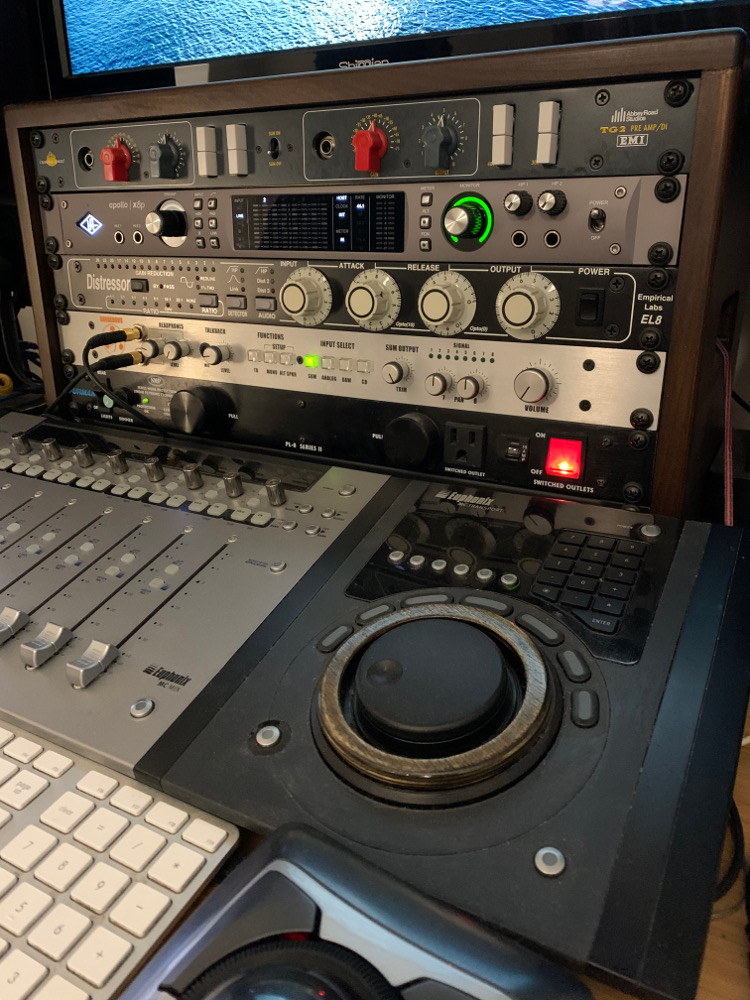
“Desert Island” outboard takes top priority, including Chandler EMI TG2 Mic Pre, Universal Audio x8p Thunderbolt audio interface, Empirical Labs Distressor, and Dangerous D-BOX monitor controller.
Audio Interface and Outboard
Universal Audio Apollo X8p
This Universal Audio Apollo x8P came about after I did a bunch of sessions with other people that raved about it and loved it. I wanted to be doing more on the production side of things, or at least more on the pre-production side of things. The Unison mic pre’s are fantastic, and being able to run a whole chain with next-to-zero latency is really amazing. I could have the gear to do that stuff–I’ve got stuff in my closet that I’m not really using that much that could be a close facsimile, but the emulations on there are so good it’s hard to justify having all this gear that you have to patch in. And dialing in a cool chain or whole console setup and then being able to save that preset or have it sync with your session via the Console Plugin is game changing.
Chandler EMI TG2 Mic Pre
The Chandler EMI TG2 is a Desert Island preamp for me. Sure, I love a 1073, but this captures the energy that I like.
Empirical Labs Distressor
My favorite compressor is the Distressor, it’s the most versatile compressor. I love a good tube compressor, but the Distressor is another Desert Island thing. I’d love a pair, but I’m mostly using it for tracking so we’ll put that on the vocal and call it a day.
Dangerous D-Box
The D-Box is fantastic. It has not given me problems over the 10 years I’ve had it. I really like the converters in them, the DAW and CD. It’s a really good D/A Converter, punchy and great. The headphone amps are also great–immediate and punchy, and whenever I use it for outboard summing it’s punchy and clear
Instruments
I like having all the instruments that I want to play available, whether I use them on a project or not. It’s great if I’m stuck on something, or just need a little bit of a break to play pedal steel,mandolin, or mess with a Teenage Engineering drum machine to give my brain a break for a minute, then come back to it. I’m going to re-approach the problem in a new way.
— David Weiss
Please note: When you buy products through links on this page, we may earn an affiliate commission.







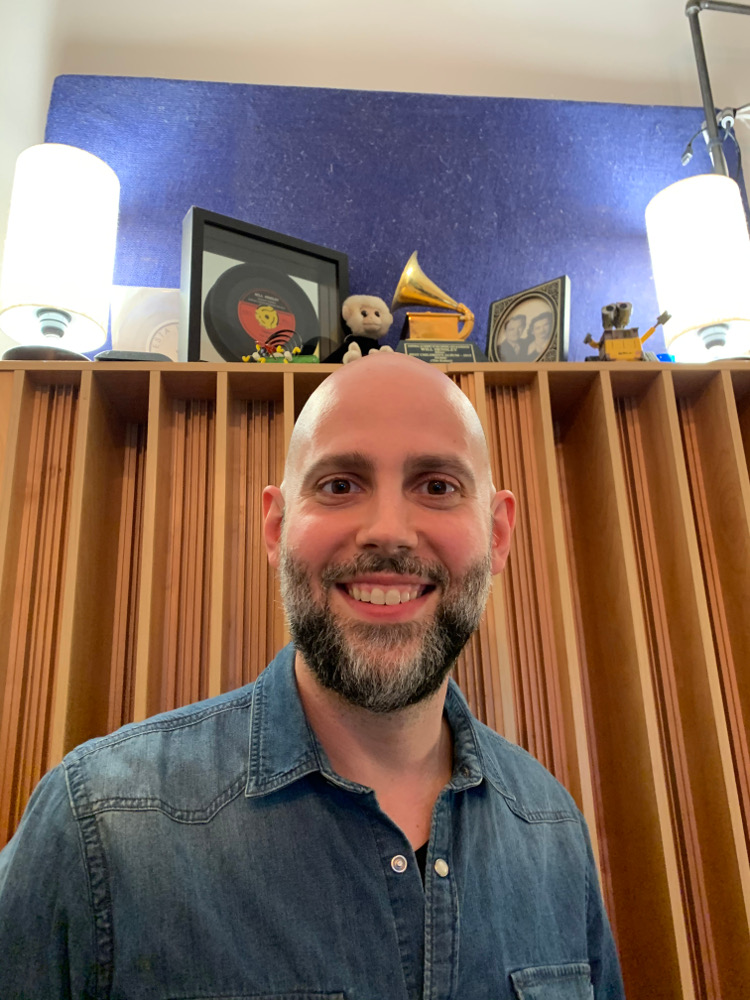
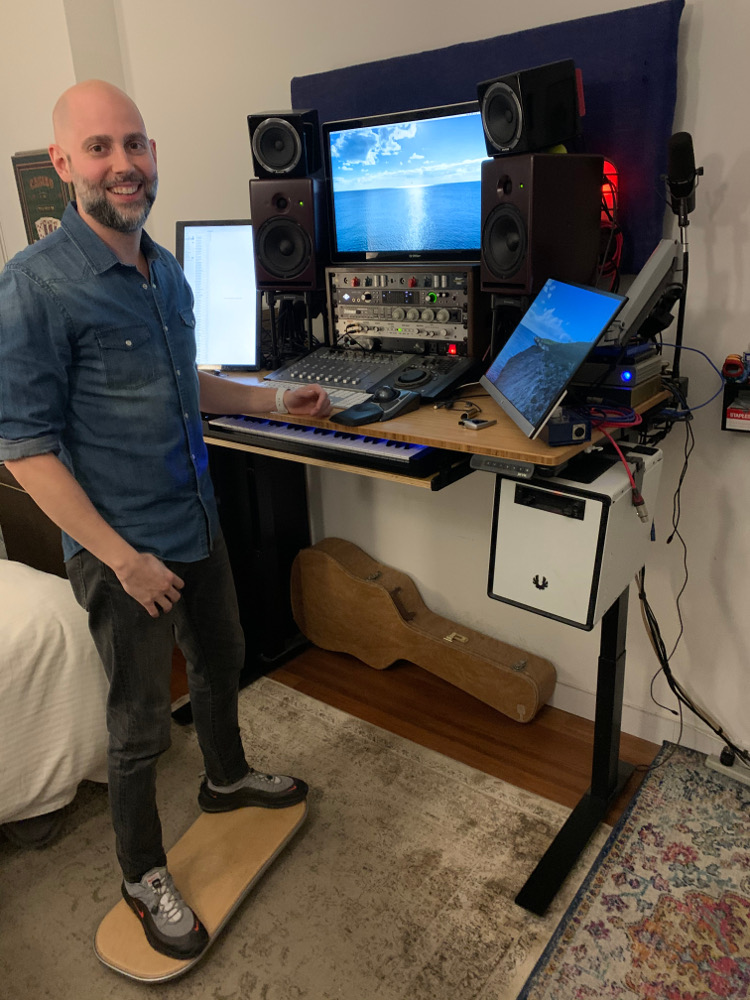
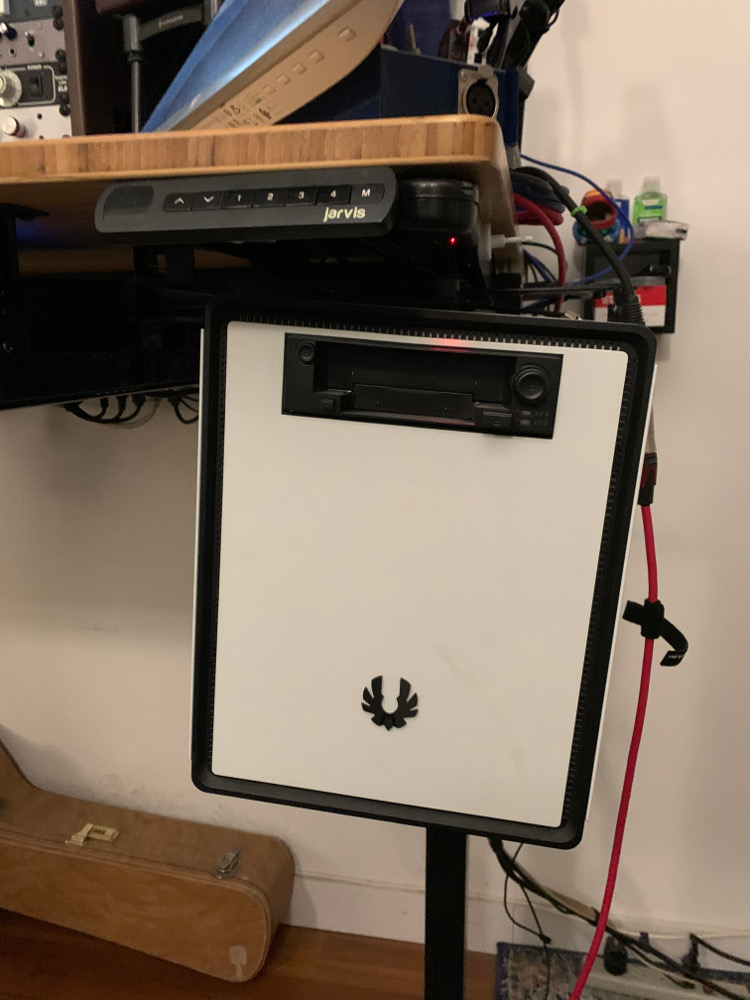
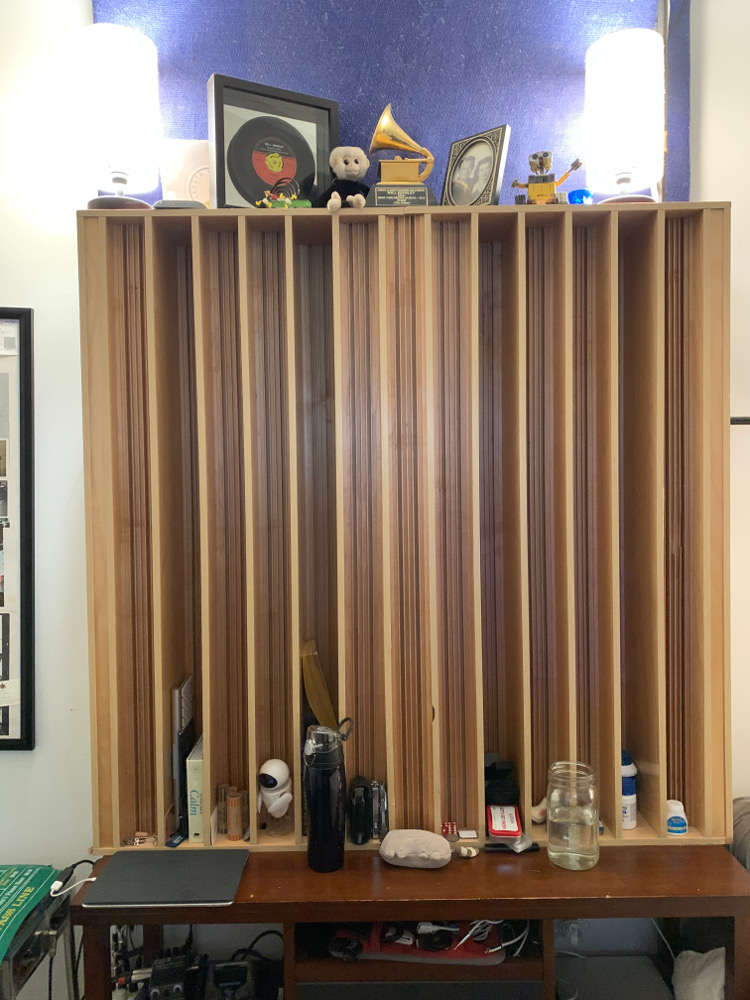
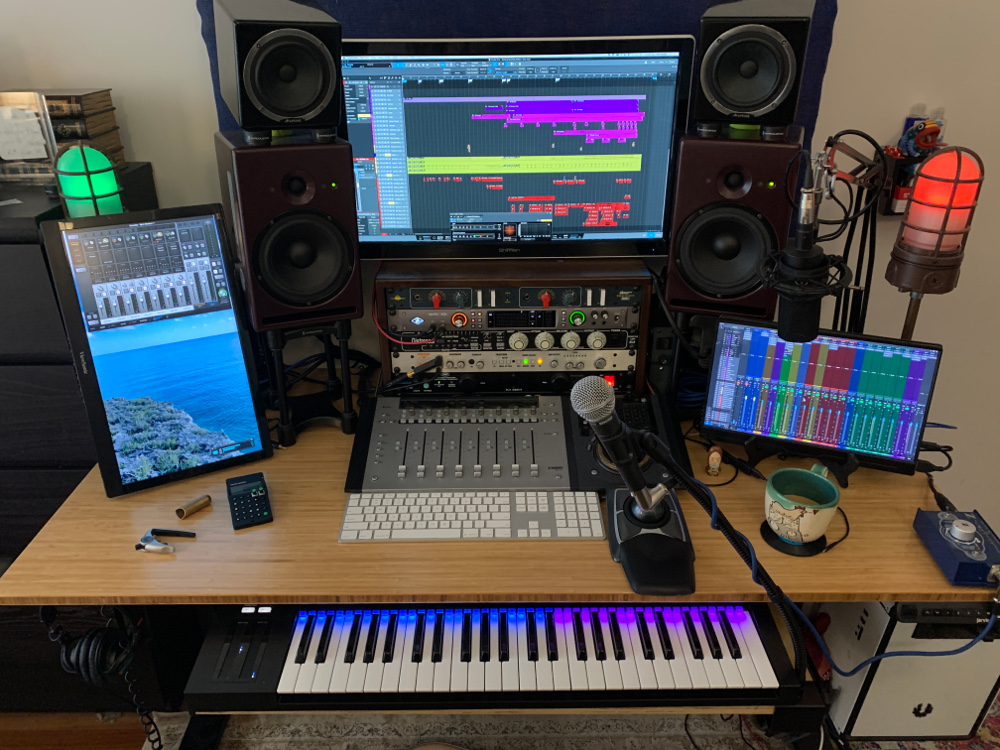
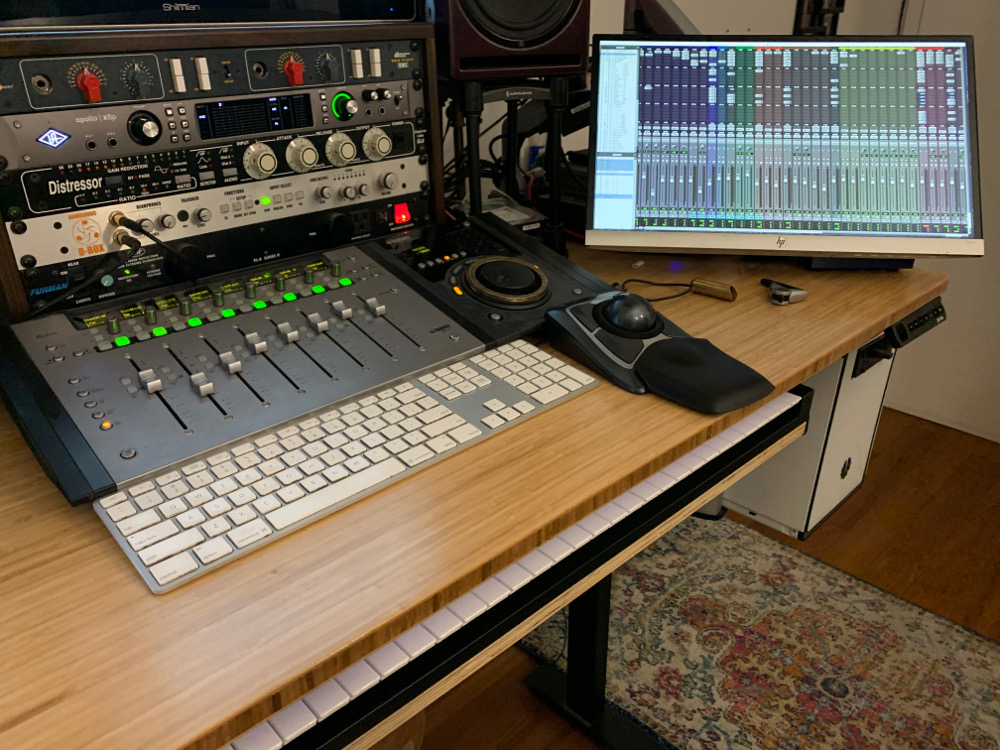

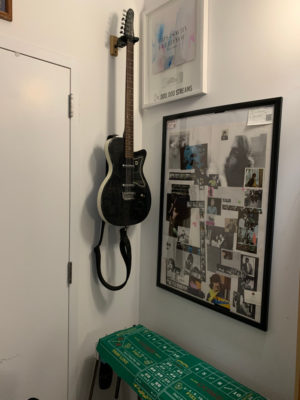
[…] http://sonicscoop.com/2020/07/20/big-mixes-from-a-brooklyn-bedroom-how-to-maximize-small-audio-spac… Big Mixes from a Brooklyn Bedroom: How to Maximize Small Audio Spaces […]
[…] When a large part of the audio workforce had to make sudden readjustments to pandemic production, this Brooklyn-based mixer had already honed a home-based mix suite. One of several full-time pros who launched his career after assisting Michael Brauer, Hensley has established himself well in the Read more… […]